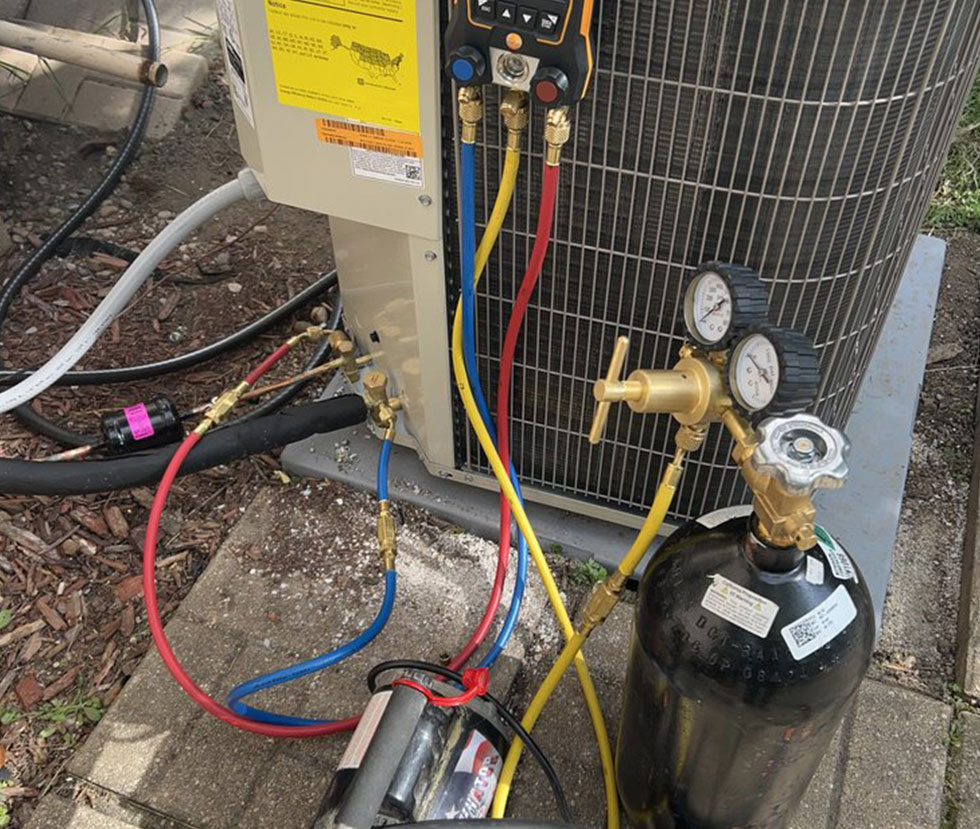The thermostat shows 72 degrees. But the air feels stale. The bedroom’s too warm. The living room stays cold. Something just doesn’t feel right. This isn’t just your imagination. Many homes feel uncomfortable despite the thermostat displaying the “perfect” temperature. That small wall unit tells one story, but your senses tell another.
And that’s the real problem.
Comfort isn’t only about the number on a screen. It’s about how your entire home feels. The air you breathe. The way it moves. The way your body reacts when you enter a room. And when something’s off, it wears on you. Physically and mentally. Whether you’re trying to rest, work, or just enjoy dinner, uneven temperatures or poor airflow can leave you irritated, restless, or just plain exhausted.
Let’s walk through the reasons this happens—and what you can do to finally feel good in your own home again.
The Thermostat Isn’t the Whole Story
Most thermostats only measure the temperature around themselves. Usually, they’re placed in a hallway. But hallways don’t get much use. They don’t reflect the way your kitchen heats up while cooking, or how the sun bakes your upstairs bedrooms in the afternoon.
So while the thermostat reads a consistent number, that doesn’t mean the rest of your home is consistent. The reading is isolated. Detached from your daily life. That’s where things start to go sideways.
Ductwork That Just Doesn’t Work
Air moves through a series of metal tunnels—your ducts. If even one section is loose, blocked, or poorly insulated, air won’t flow evenly.
That could mean:
- One room gets all the cooled or heated air while another barely gets any.
- You crank the thermostat up or down, thinking it’ll help—but it doesn’t.
- The system keeps running longer than needed, adding to your energy bills.
Even small issues—like minor air leaks or dust buildup—can throw off the balance of your system.
Dirty Filters That Drag Everything Down
Air filters protect your system and your lungs. But when they get clogged, they slow everything down.
Less air moves through the system. Temperatures fluctuate. Rooms feel stuffy or overly humid. Allergies kick in. Your HVAC system has to work harder to transport air, which makes it last less time. One of the easiest things you can do to make your home more pleasant is to change your filters often. But a lot of people forget about it.
An Aging System That Can’t Keep Up
Time wears down everything. HVAC systems are no different. After 10-15 years, even the most reliable units start to slip. They struggle to regulate temperatures or maintain airflow.
Your home might:
- Feel cool in some spots, warm in others
- Run endlessly without reaching your desired temperature
- Make odd noises or emit strange smells
These signs show that your system is no longer efficient. And your comfort pays the price.
Unbalanced Airflow That Leaves You Guessing
Even with clean filters and healthy ducts, airflow needs to be balanced. Some rooms need dampers adjusted. Others might need booster fans. When air doesn’t circulate properly, it settles. That’s when you get that “off” feeling—like the air is stale or stagnant.
It can even lead to moisture problems. Condensation. Mold in hidden places. Damage that takes a long time to notice, but is costly to fix.
Thermostat Settings That Work Against You
Programming your thermostat is a helpful feature—when used correctly. But wrong settings or schedules can make things worse.
For example:
- Running the heat during the day when nobody’s home
- Cooling at night when outdoor temps are already low
- Setting wide temperature swings that cause the system to overcompensate
Fine-tuning these settings creates consistency, saves energy, and makes the home feel more stable throughout the day.
Insulation Gaps That Let Comfort Slip Away
If your home leaks air, even the best HVAC system won’t be able to help. Bad insulation around windows, doors, attics, and basements lets air from outside get in and air that has been conditioned get out. It’s like attempting to fill a bathtub when the drain is open. The mechanism works, but the comfort doesn’t last. You’re paying to heat or cool the outside, while you stay uncomfortable inside.
What You Can Do—And What It Means for You
There’s good news. Most of these problems can be spotted early and fixed without major disruptions.
Here’s what that means for you:
- Steady Comfort: No more bouncing between too hot and too cold. Every room feels the way it should.
- Clean Air: Fewer sneezes. Less dust. Easier breathing day and night.
- Energy Savings: A smoother system uses less power, which means lower bills—without sacrificing comfort.
- Longer System Life: Fixing airflow and maintenance issues keeps your HVAC running stronger for years.
- Better Sleep and Focus: When temperatures stay steady, your body relaxes. Your mind stays clearer. You feel better.
Small Fixes, Big Impact
Some of the most effective improvements are surprisingly simple:
- Change air filters every 1–3 months.
- Have your ducts inspected once a year.
- Seal air leaks around windows and doors.
- Use ceiling fans to help move air in warm months.
- Schedule seasonal HVAC checkups to catch wear and tear early.
These aren’t massive changes. But they make your home feel smoother. More natural. More livable. Every day.
Final Thoughts: When “Fine” Isn’t Good Enough
You know your home better than anyone. And when something feels off—even if the thermostat disagrees—it’s worth paying attention. Comfort is about more than numbers. It’s about how you feel when you sit down to relax and get up in the morning, when your kids are playing in the living room.
It’s the kind of thing you shouldn’t have to think about. It should just feel right. If your home has felt stuffy, uneven, or just slightly “off,” it may be time to look beyond the usual. Getting your system checked by someone who understands how every part affects the whole can make a real difference.


